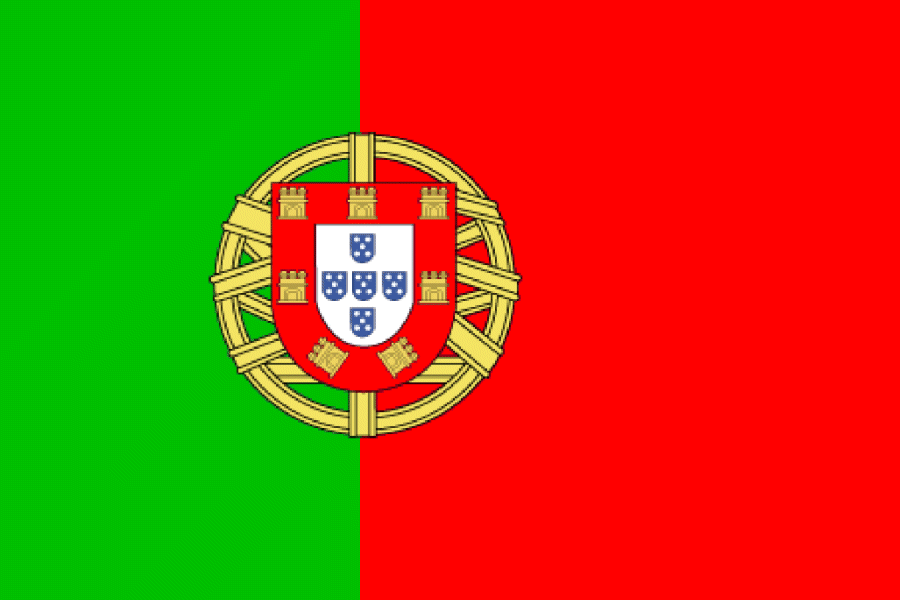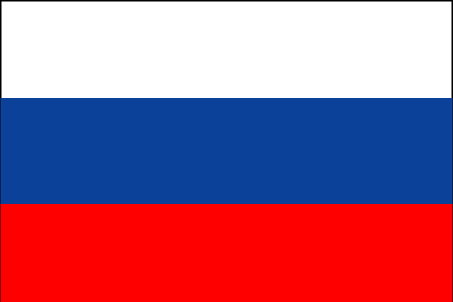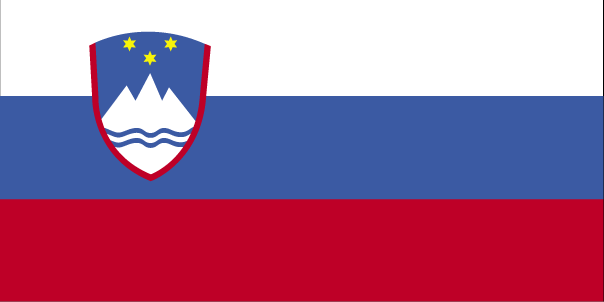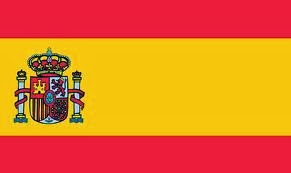Italy are the champions of UEFA Futsal EURO 2014 and claim their second title after the 2003 victory on home soil. The twelve days of captivating competition ended when the Azzurri defeated fellow finalists Russia 3-1 in Belgium’s second city. In this post I take a look back on the tournament.
A Bright Future For Futsal
As an advert for the sport of futsal, the tournament was an unequivocal success. Over the 12 days of competition the accumulated attendance was just under 90,000 and the final was a sell out well in advance. When you consider the hosts were knocked out in the group phase as expected it is even more impressive. This demonstrates that futsal is able to produce enough interest to generate income and be self-sustainable. Futsal is such an amazing sport to play and watch that, even if it continues to receive little support and resources for its development, I am sure reaching this stage is inevitable.
The event organisers, UEFA, should be commended for the excellent organisation and promotion of the tournament. The introduction of the black court at Hungary 2010 was a good idea and differentiates futsal from other indoor sports. However the decision to have a dark coloured ball this year was clearly a mistake that needs to rectified for the next edition. But, overall, they presented the competition splendidly and left a positive impression of futsal.
The Gap Continues to Shrink
We have heard that the difference between the big four nations (Italy, Portugal, Russia and Spain) and the others is narrowing for quite some time. Though the games were getting closer I think this is the tournament where the second level nations were genuinely competitive with the heavyweights.
In 2012 those elite four won all their group games against the other countries. This time no team was able to record two victories in the group phase, which included surprises like Slovenia’s victory over Italy and Croatia’s draw with Spain. This is only the second time no team has recorded maximum points at this stage. The last time was in 2007 under a different format with just two groups resulting in the four heavyweights having to face each other. Every team in Antwerp managed to earn at least a point except Netherlands. Over half of the twenty games finished with a 1 goal or fewer difference in the final score. This highlights how competitive the teams were and made for a very interesting competition.
However, in the end it was still the familiar favourites that reached the semi-finals. The significant advantage these nations have over the others is the quality of their domestic leagues; They have professional championships which not only means the players are able to train more frequently but the level of competition is higher with the presence of top foreigners. What matters most is what your national team players are doing on a daily basis within their clubs.
If countries such as Croatia had professional leagues I am sure they would be on the same level as the big four. Slovenia has seen a lot of improvement through having the majority of their players representing foreign clubs.
In addition to this, if they want to really make their mark and challenge for the title, there is one other aspect they must change. This is their squad management. Was it a co-incidence that all the semi-finalists utilised every player available to them? Out of those four only Portugal had a noticeable drop in performance when their first four weren’t on and this was because their star man Ricardinho is unique.
Compare this to Slovenia and Croatia who gave most of their minutes to five or six players. This will only get you so far and when it comes to the latter stages in these tournaments, or even just at the end of a game, the players are inevitably fatigued. This costs through a lack of intensity and bad decision-making. Croatia should have learned their lesson in EURO 2012 when at the end of the tournament they looked like a very poor imitation of the team that started the competition. You may argue that they are forced to do this because they don’t have the quality in depth of the best nations but I would disagree.
I have played alongside or against every player in the Croatian squad and they certainly have enough ability. Most of the time what can appear to be a lack quality with fringe players is just a lack of confidence. Psychologically, the most important thing for most players mentally is to feel the trust of your coach and the freedom to make mistakes, which paradoxically results in fewer errors. If a coach doesn’t show belief in some players they will perform below their maximum level. With a coach’s confidence a player can be a world-beater and without it the same player can look out of his depth. The coaches give a couple of minutes to a player and, when he doesn’t perform, wrongly attribute this to a lack of quality; Reinforcing their belief that they must stick with their favourite players.
I expect that the trend of improvement from these second level nations to continue and in 2016 I would not be surprised to see a couple of the big four go out before the semi-final stage. As for the weaker nations at the finals, where futsal is not a professional sport, I think the goalkeeping position is something that they need to address. Many of these are using techniques suited for 11-a-side football goals with lots of sliding and diving, rather than focusing on positioning and blocking. This is the most important position in futsal and developing better goalkeepers would have a significant impact on their success.
Performance Evaluation
In my preview of the tournament I profiled the big four and, my nomination for dark horse, Slovenia. Here I will review their performances. As mentioned previously, the competition was very equal, especially in the semi-finals which were decided on the smallest of details. We could have just as easily had a Portugal v Spain final and different conclusions would be drawn about the teams’ performances. With hindsight it is easy to say what went right and what went wrong but here is how I saw the teams.
They caused the first upset with the 2-1 defeat of Italy before eventually bowing out in the quarter finals after a 4-0 loss to Spain. They’re players are very good in 1v1 situations, both attack and defense. They possess excellent technique, are physically strong and have competitive mentalities. They used these qualities to protect and keep the ball well in the middle of the court but struggled to use this possession to create chances. Their defending of the fly goalkeeper against Azerbaijan and defending set plays highlighted their need to improve tactically.
They can look forward to 2016 when all their players will still be young and have 2 years more experience under their belts. They will be pleased with their performances and encouraged for the future.
Portugal (4th Place)
 Ricardinho was Portugal’s magician and conductor, with most of their play coming through him and his absence was apparent when not on court. Their defending was poor throughout the tournament with players such as Joel Queirós, Cardinal and Ricardinho making many errors. They conceded on average 3.4 goals per game compared to champions Italy’s 1.6. However I thought they were the better team in the semi-final against Italy but a failure to convert their chances, especially in the 1st half, ended up costing them.
Ricardinho was Portugal’s magician and conductor, with most of their play coming through him and his absence was apparent when not on court. Their defending was poor throughout the tournament with players such as Joel Queirós, Cardinal and Ricardinho making many errors. They conceded on average 3.4 goals per game compared to champions Italy’s 1.6. However I thought they were the better team in the semi-final against Italy but a failure to convert their chances, especially in the 1st half, ended up costing them.
Though they would have hoped to have at least made the final, 4th place keeps them among Europe’s top sides. Key players such as João Benedito, Arnaldo, Gonçalo and Pedro Costa probably won’t be around in 2016 so they will have to integrate a new generation.
Spain suffered their first defeat in the competition since 2005 at the hands of Russia. They provide a masterclass in defending and demonstrated this throughout the competition. In the first half of the semi-final they suffocated the Russian attack and left them without any options, just as they did to Brazil in the 2012 World Cup. However a failure to convert their chances and two grave defensive errors meant they lost despite being the better team for most of the game.
The injury of Torras and suspension of Ortiz was the crucial factor. The absence of these experienced players was noticeable, not only from a technical perspective but also the reassurance and leadership they provide. Added to this was the fact they chose to take 3 goalkeepers which left them with fewer options when injuries and suspensions took their toll.
In this tournament they did not possess their usual attacking threat from open play. They looked most dangerous from Fernandao’s pivot play, Miguelin’s 1v1s and Aicardo from set plays; in which they excel. In 2012 Sergio Lozano was the competition’s best attacking player but, after only recently returning from a two month injury layoff, he clearly wasn’t at his best this time.
This is the first time Spain have not been either World or European Champions since 2000 and neither do one of their clubs hold the UEFA Futsal Cup or Intercontinental trophy. Could Spain be in decline? I am confident this is just an anomaly and despite not winning I believe they were the best team at the championship. The six times champions have a young squad with only Torras and Fernandao doubts for 2016 and have a lot of excellent young players who weren’t in Belgium. How they fill the void if Fernandao ends his international career will be key. Like a wounded animal, I expect them to come back stronger and more determined at the next edition.
Russia (Runners Up)
 Russia’s focus since 2012 has been on how to beat Spain, after they were knocked out by their perennial rivals in both the EURO and World Cup. They identified the problem as being psychological and devised a plan to address this which included a meeting with the 1999 EURO Champions to inspire them. It achieved its objective with a 4-3 win against La Roja in the semi-final but ended up being a double-edged sword. After Herculean effort against Spain, in the final they were mentally fatigued and they showed lapses in concentration, frequently punished in futsal at this level.
Russia’s focus since 2012 has been on how to beat Spain, after they were knocked out by their perennial rivals in both the EURO and World Cup. They identified the problem as being psychological and devised a plan to address this which included a meeting with the 1999 EURO Champions to inspire them. It achieved its objective with a 4-3 win against La Roja in the semi-final but ended up being a double-edged sword. After Herculean effort against Spain, in the final they were mentally fatigued and they showed lapses in concentration, frequently punished in futsal at this level.
Tactically they relied heavily on their pivots with almost all their goals involving them. This was effective early in the tournament but made them predictable and one dimensional. This threat was more or less nullified in the semi-final and final with masterful 1v1 defending by Jose Ruiz and Aircardo for Spain, and Murilo and Ercolessi for Italy. As they searched for passes to their pivots it often resulted in a lack of movement and slowed their ball circulation. With both Spain and Italy pressing for large parts of the games this led to them often losing possession easily.
Their other attacking option was 1v1s on the left wing with Fukin and Abramov but this was rarely successful, especially for Fukin. In both games they tried a plan B by adopting a 4-0 system but this is a formation based on mobility and they were unaccustomed to playing it, meaning it seldom worked. The lack of speed to their play also affected their counter attacking with players not running deep to take advantage when possession changed hands.
Gustavo and Cirilo are unlikely to play in 2016, possibly also Pula, but otherwise the other players will remain. I was impressed by two of their new editions, Kutuzov and Milovanov, and both have bright futures. Finally overcoming Spain will give them confidence and 2016 could be the moment they replicate the success of the 1999 generation.
Italy (Champions)

Italy’s victory was built on defence but this was not the catenaccio they are famous for in football, as they frequently pressed high up the court. They rarely risked possession and had good defensive balance to prevent counter attacks before they started. When their defence was breached they had one of the best goalkeepers in the world, Stefano Mamarella, ready to save the day.
In attack the trio of Lima, Saad and Fortino were always a threat. Captain Lima was integral to their play, getting four goals and three assists. Credit must go to head coach Roberto Menichelli who has implemented a style of rapid ball circulation, creating triangles and showing between the lines, reminiscent of the Spanish.
They have a young squad and only Saad will possibly need to be replaced for 2016. Captain Lima spoke about their excellent team spirit and after sharing an experience like this together that will only be stronger now. This team will reach its peak in the next few years and will believe this is the time to win some more trophies.
My team of the tournament
Starting Five
Goalkeeper – Stefano Mamarella (Italy)
The two-time World Goalkeeper of the Year got off to a bad start when his foot got stuck for the first goal in the loss to Slovenia. This led to some criticism but I have trained alongside him and knew his world-class ability would show and so it did. Incredible distribution with his hands.
 |
| Italy captain, Lima, had an outstanding tournament |
Defender – Gabriel Lima (C) (Italy)
My player of the tournament. Comfortable in any position on court and the maestro of the Italian side. Very intelligent and skilful. The more important the match, the better he played.
Winger – Franko Jelovčić (Croatia)
Fast and with excellent technical ability. Constant danger, scoring in all Croatia’s games and getting two assists. Played superbly in quarter final against Italy, including an incredible solo goal. At 22 years old he is one of Europe’s best prospects.
Winger – Ricardinho (Portugal)
Portugal’s superstar dictated their attacking play. He was the highest player for assists with five and also scored three goals. Sets new standards for technical ability and a joy to watch. Pure entertainer.
Pivot – Eder Lima (Russia)
Scored the goal of the tournament in the group phase against Portugal with an outrageous volley. Also won the Golden Boot with 8 goals, including one in the final with an exemplary demonstration of pivot play with his back to goal. His ability to turn in either direction makes him very difficult to defend.
Substitutes
Rafa GK (Spain)
Carlos Ortiz (Spain)
Igor Osredkar (Slovenia)
Vladislav Shayakhmetov (Russia)
Sergio Romano (Italy)
Tihomir Novak (Croatia)
Saad (Italy)
Miguelin (Spain)
Fortino (Italy)
 |
| Mastermind behind Italy’s success |
Coach
Roberto Menichelli (Italy)
Conclusions
I have immensely enjoyed watching the tournament. I can only remember one game which wasn’t entertaining. Everything that high level futsal offers was on show; incredible technique, intensity and close encounters with a great atmosphere. As always we saw some spectacular goals and memorable pieces of skill. Now we must wait to see what the 2016 edition will bring in Serbia. I hope I will be taking part (with England!) rather than just a spectator.
You can leave your thoughts on the tournament in the comments section. Who would be in your team of the tournament and who was the best player? Were Italy deserved winners? Can they hold onto the trophy next time? What was the best moment for you? Do you agree or disagree with my analysis?
If you missed any of the games most of the highlights can be found here.
P.S.
Congratulations to Mark Murray who beat me to claim 1st place in my UEFA Futsal Euro Predictor League and 2nd in the whole game, winning some Kia perfume and car scent. Well done!




This was my first time watching a futsal tournament in full and it was so enjoyable. The technique, pace, agility and the way the games ebbed and flowed had me fully engrossed. I particularly enjoyed watching Richardinho, what a great player he is. Thanks to your blog I can now track the big teams in Europe and follow England's rapid progress, keep up the good work!
Thanks for your comments Robes. Futsal is addictive so watch out!!